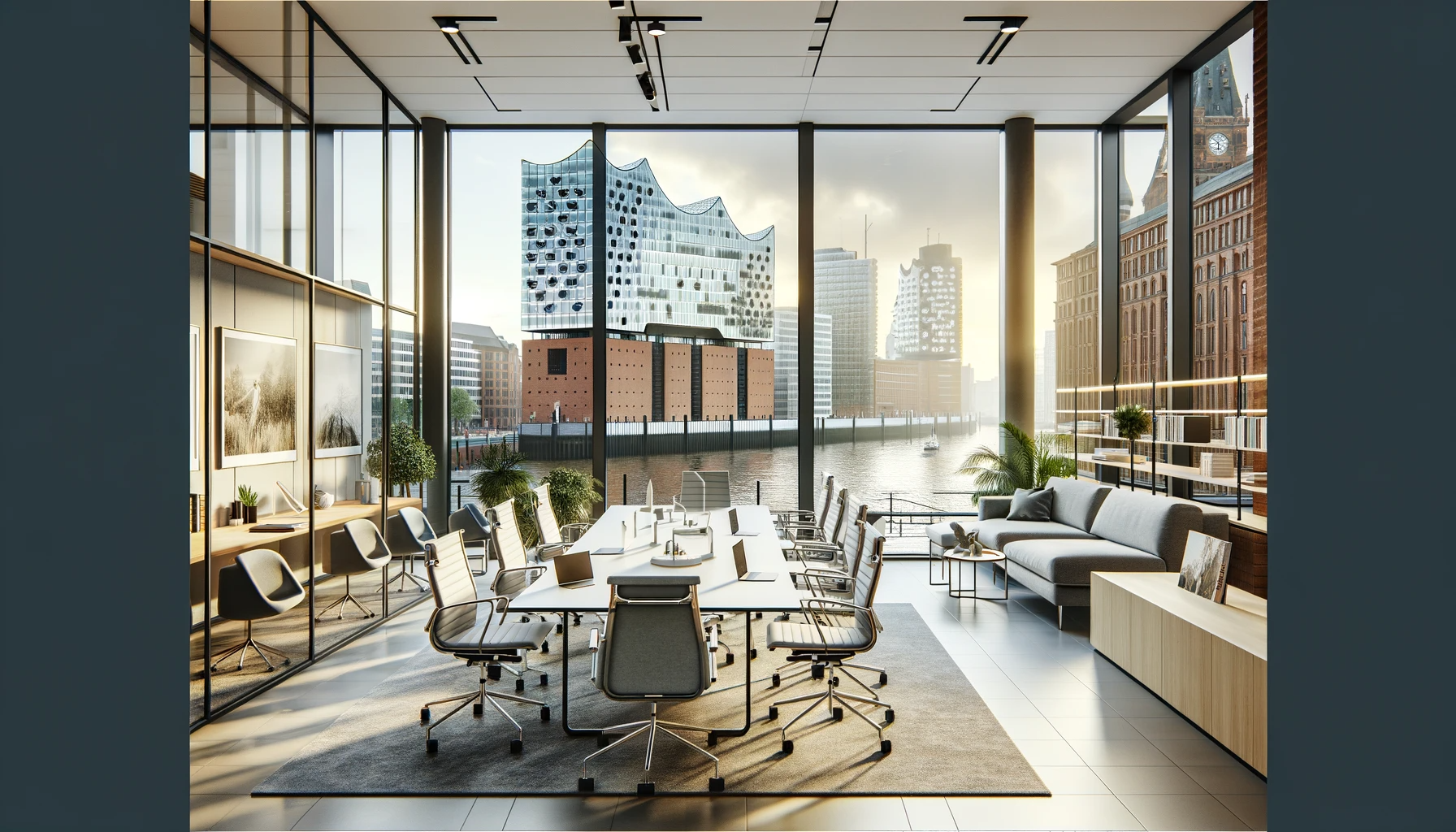Example Hamburg: How can office spaces be successfully reduced?

A stiff breeze against change – or justified criticism? In July 2021, the city of Hamburg aimed to reduce the office spaces of government agencies. The goal was to cut rents and save money. The reactions from the union and the employee council were strong, and the initiative was heavily criticized. For today’s debates on space reduction, the question arises: What lessons can be drawn from the Hamburg case?
Moving away from the “status symbol of individual offices”
About 32 m2 – that was the size of an average individual office in 2021 according to the Hamburg Finance Ministry. To curb financial setbacks due to the COVID-19 pandemic, a cost-cutting program was formulated: The finance senate called for a reduction of individual office spaces to 28 m2 to lower rental costs. New work structures like home offices or desk-sharing models were supposed to facilitate this change.
This plan was not new: In 2011, the senate already advocated for a “measurable reduction of office spaces.” A guideline was formulated, taking into account both the space requirements of specific activities and internal hierarchies. The Finance Ministry took the first step at that time by consolidating the workspaces of two buildings. However, the cost-cutting plan was not fully implemented.
In 2021, the city of Hamburg faces hurdles again – especially from the unions and the employee council. The decision to reduce space was made “from the top down,” without involving the workforce. While Ver.di supported the basic idea, it criticized that cost-saving measures took precedence over modernizing workspaces.
The current state of government office spaces
Even today, the rents for government infrastructure are still too high and permeated with outdated work forms – as the German Federal Court of Audit found in an April 2023 report. Many agencies still adhere to guidelines and allocations that partly date back to the 1950s. According to the report, a revision of space requirements and subsequent modernization is essential to save costs. This could also contribute to environmental protection, as reducing space facilitates CO2 reduction.
Space planning today
The past criticism of Hamburg highlights how a restructuring of office spaces should be carried out. Reducing spaces while simultaneously equipping them with modern work forms such as group offices or desk-sharing concepts always entails a cultural shift. Optimization always represents a change that must be clearly justified.
At this point, tools like ReCoTech can assist: The algorithm-based space planning maps the entire company and automatically calculates the optimized space requirement per workstation. The result: Decision-makers and employees can see at a glance within what framework a reduction in office space makes sense. The software enables transparent communication to successfully implement cost savings through space reduction.
These articles might also interest you

New Partnership with the City of Böblingen: A Step Towards the Future
We are excited to announce the official partnership between ReCoTech and the City of Böblingen! This collaboration marks a significant ...

GEFMA 130-1 Sets New Standards for Sustainable and Efficient Space Utilization in Real Estate
Space management is a crucial aspect of real estate operations. It encompasses all activities related to the planning, use, and ...
New customer for ReCoTech: Welcome to STADT UND LAND
We are delighted to announce that ReCoTech has gained another significant client: STADT UND LAND Wohnbauten-Gesellschaft mbH. Our innovative workspace ...

